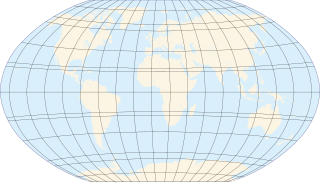Equator
The equator, a circle of latitude that divides a spheroid, such as Earth, into the northern and southern hemispheres. On Earth, it is an imaginary line located at 0 degrees latitude.
Equator |
This article contains a list of the circles of latitude on Earth.
The equator, a circle of latitude that divides a spheroid, such as Earth, into the northern and southern hemispheres. On Earth, it is an imaginary line located at 0 degrees latitude.
Equator |

A circle of latitude or line of latitude on Earth is an abstract east–west small circle connecting all locations around Earth at a given latitude coordinate line.

A most-perfect magic square of order n is a magic square containing the numbers 1 to n2 with two additional properties:
The 2006 Betfred Premier League was a professional non-ranking snooker tournament that was played from 14 September to 3 December 2006.
The 2005 (Dec) Betfred Premier League was a professional non-ranking snooker tournament that was played from 15 September to 4 December 2005.
The 2004 Betfair Premier League was a professional non-ranking snooker tournament that was played from 10 January to 14 March 2004.
The 2002 Daily Star Premier League was a professional non-ranking snooker tournament that was played from 5 January to 12 May 2002.

Basketball Bundesliga-Pokal, commonly known as the BBL-Pokal, is the annual national basketball cup competition in Germany. Since 2009, the competition has been conducted only between the top-ranked clubs of each Basketball Bundesliga (BBL).
The 2002–03 Lega Basket Serie A, known as the Foxy Cup for sponsorship reasons, was the 81st season of the Lega Basket Serie A, the highest professional basketball league in Italy.
AEK B.C. in international competitions is the history and statistics of basketball club AEK B.C. in FIBA Europe, Euroleague Basketball Company competitions and FIBA Intercontinental Cup.